Search results for: 'Art'
-
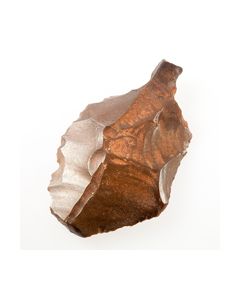 Paläolithische Pfeilspitze oder Speerspitze
Paläolithische Pfeilspitze oder Speerspitze35.000 bis 30.000 v. Chr., Jungpaläolithikum. Letzte Phase der Altsteinzeit, Homo sapiens. Patinierter Flintstein mit deutlichen Bearbeitungsspuren.
Price: on request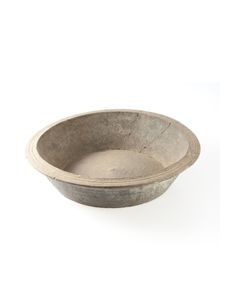 Großer, musealer römischer Teller
Großer, musealer römischer TellerRauwandig, doppelt gerillter Horizontalrand, konkaver Boden. Steile, konisch zulaufende Wandung.
Price: on request Reich bemalte griechische Lekanis
Reich bemalte griechische LekanisHenkellose griechische Schale mit hohem Standfuß. Deckel in rotfiguriger Malerei und weißem Überzug ausgeführt. Apulien, 5. - 4. Jh. v. Chr.
Price: on request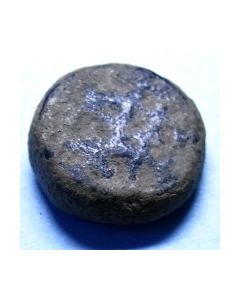 Bronzegewicht, Islamisch, 1 2/3 Mithqal
Bronzegewicht, Islamisch, 1 2/3 MithqalLevante, 6 Jh. n.Chr. bis 10 Jh. n. Chr., spätbyzantinische bis islamische Epoche. Entsprechende antike Gewichtseinheit: 1 und 2/3 Mithqal (Mitqals).
Price: on request Pair of ancient gold earrings
Pair of ancient gold earringsNice example for ancient gold jewellery with elaborate decoration. From the Dr. Neumeister collection.
Price: on request Roman glass pitcher
Roman glass pitcherTurquoise glass jug from the late Roman Imperial period. From the Heckmann collection.
Price: on request Large ceremonial knife of the Sican culture
Large ceremonial knife of the Sican cultureThe so-called Tumi was a weapon to cut the throats of humans and animals in ritual sacrifices. The knife certainly fulfilled an additional representative function in the afterlife. From the period of the Sican's cultural florescence during the 10th to 12th centuries AD.
Price: on request Ceremonial knife of the Sican culture
Ceremonial knife of the Sican cultureThe so-called Tumi was a weapon to cut the throats of humans and animals in ritual sacrifices. The knife certainly fulfilled an additional representative function in the afterlife. From the period of the Sican's cultural florescence during the 10th to 12th centuries AD.
Price: on request Small ceremonial knife of the Sican culture
Small ceremonial knife of the Sican cultureThe so-called Tumi was a weapon to cut the throats of humans and animals in ritual sacrifices. The knife certainly fulfilled an additional representative function in the afterlife. From the period of the Sican's cultural florescence during the 10th to 12th centuries AD.
Price: on request Three neolithic arrowheads from Egypt
Three neolithic arrowheads from EgyptThe Stone Age points are beautifully crafted, with finely serrated edges. From a 100 year old museum collection.
Price: on request Ceremonial knife of the Sican culture
Ceremonial knife of the Sican cultureThe so-called Tumi was a weapon to cut the throats of humans and animals in ritual sacrifices. The Tumi certainly fulfilled an additional representative function in the afterlife. From the period of the Sican's cultural florescence during the 10th to 12th centuries AD.
Price: on request Old Babylonian cylinder seal with gods and inscription
Old Babylonian cylinder seal with gods and inscriptionScene with sun god Shamash and the Amorite god Amurru. The cuneiform writing names the owner of the seal, a faithful servant of these deities.
Price: on request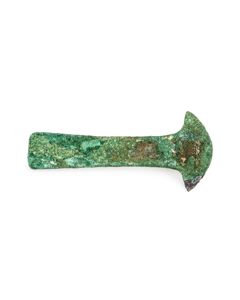 Ceremonial knife of the Sican culture
Ceremonial knife of the Sican cultureThe so-called Tumi was a weapon to cut the throats of humans and animals in ritual sacrifices. The knife certainly fulfilled an additional representative function in the afterlife. From the period of the Sican's cultural florescence during the 10th to 12th centuries AD.
Price: on request Three neolithic arrowheads from Egypt
Three neolithic arrowheads from EgyptThe Stone Age points are beautifully crafted. From a 100 year old museum collection.
Price: on request Three neolithic arrowheads from Egypt
Three neolithic arrowheads from EgyptThe Stone Age points are finely crafted. From a 100 year old museum collection.
Price: on request Three neolithic arrowheads from Egypt
Three neolithic arrowheads from EgyptThe Stone Age points are finely crafted. From a 100 year old museum collection.
Price: on request Three neolithic arrowheads from Egypt
Three neolithic arrowheads from EgyptThe Stone Age points are finely crafted. From a 100 year old museum collection.
Price: on request Three neolithic arrowheads from Egypt
Three neolithic arrowheads from EgyptThe Stone Age points are finely crafted. From a 100 year old museum collection.
Price: on request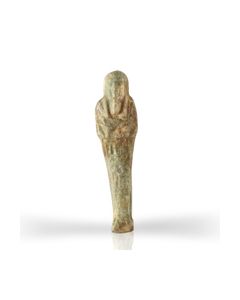 Egyptian ushabti
Egyptian ushabtiWell-preserved funerary statuette made of mint green faience. From the Late Period of Ancient Egypt.
Price: on request Egyptian ushabti
Egyptian ushabtiWell-preserved funerary statuette made of mint green faience. From the Late Period of Ancient Egypt.
Price: on request Three neolithic arrowheads from Egypt
Three neolithic arrowheads from EgyptThe Stone Age points are finely crafted. From a 100 year old museum collection.
Price: on request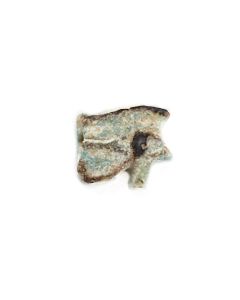 Eye of Horus from the Third Intermediate Period of Egypt
Eye of Horus from the Third Intermediate Period of EgyptSmall amulet in form of the Eye of Horus. Popular type of protective amulet from Ancient Egypt.
Price: on request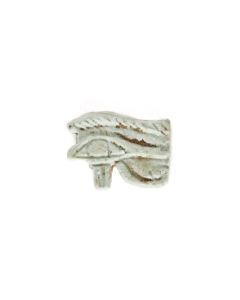 Egyptian Eye of Horus
Egyptian Eye of HorusSmall amulet in form of the Eye of Horus. Popular type of protective amulet from Ancient Egypt.
Price: on request Egyptian Eye of Horus
Egyptian Eye of HorusSmall amulet in form of the Eye of Horus. Popular type of protective amulet from Ancient Egypt.
Price: on request Egyptian Eye of Horus
Egyptian Eye of HorusSmall amulet in form of the Eye of Horus. Popular type of protective amulet from Ancient Egypt.
Price: on request Egyptian Eye of Horus
Egyptian Eye of HorusSmall amulet in form of the Eye of Horus. Popular type of protective amulet from Ancient Egypt.
Price: on request Small Eye of Horus from ptolemaic period
Small Eye of Horus from ptolemaic periodSmall amulet in form of the Eye of Horus. Popular type of protective amulet from Ancient Egypt.
Price: on request Roman sprinkler
Roman sprinklerPerfume bottle with pattern on mold-blown body. An aperture made it easy to dispense the precious content drop by drop. Made in the Roman province Syria in the 3rd to 4th cent. AD.
Price: on request Western Asiatic macehead
Western Asiatic maceheadHeavy stone head of a mace with a depressed globular shape. Beautiful whitish brown hardstone. From the Early Bronze Age of Western Asia.
Price: on request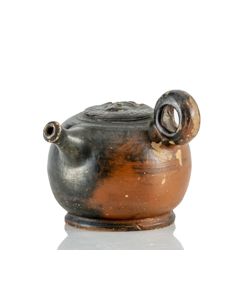 Rare Greek breast pump or joke vessel
Rare Greek breast pump or joke vesselPerfectly preserved, worth the exhibition in a museum, decorated with Medusa head. From an old German collection, acquired in the 1960s.
Price: on request Large polychrome figure of a woman from Canosa with TL analysis
Large polychrome figure of a woman from Canosa with TL analysisExceptionally well preserved polychrome painting and surface details. An almost identical figurine is on exhibition in the British Museum. From German private collection, acquired in the 1980s.
Price: on request Roman gold ring with eagle
Roman gold ring with eagleThe beautiful ring from Roman Imperial times is decorated by a black stone intaglio. The gem shows a standing eagle.
Price: on request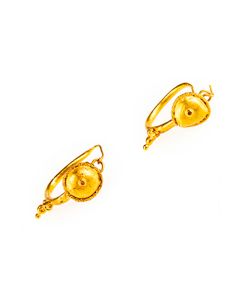 Roman earrings with shield
Roman earrings with shieldMatching pair of jewellery made of gold with shield and granulation. From the Roman Imperial period.
Price: on request Baktrisches Alabastergefäß - einem Säulenidol ähnlich
Baktrisches Alabastergefäß - einem Säulenidol ähnlichMit ausgeprägter Standfläche, in der Mitte verjüngt, öffnet sich konisch nach oben. Spätes 3. Jt. - frühes 2. Jt. v. Chr.
Price: on request Römisches kaiserzeitliches Tonunguentarium
Römisches kaiserzeitliches TonunguentariumDickwandige, kleinformatige Kugelflasche mit langem Hals. Hellroter Ton mit Spuren von dunkelrotem Überzug. 1.-2. Jh. n. Chr.
Price: on request Ägyptisches Skarabäussiegel mit Nil-Krokodil
Ägyptisches Skarabäussiegel mit Nil-KrokodilAuf Stempel Frau vor Nil-Krokodil. Anbetung des Krokodilgotts Sobek. Zweite Zwischenzeit, 13. bis 17. Dynastie des Alten Ägypten.
Price: on request

